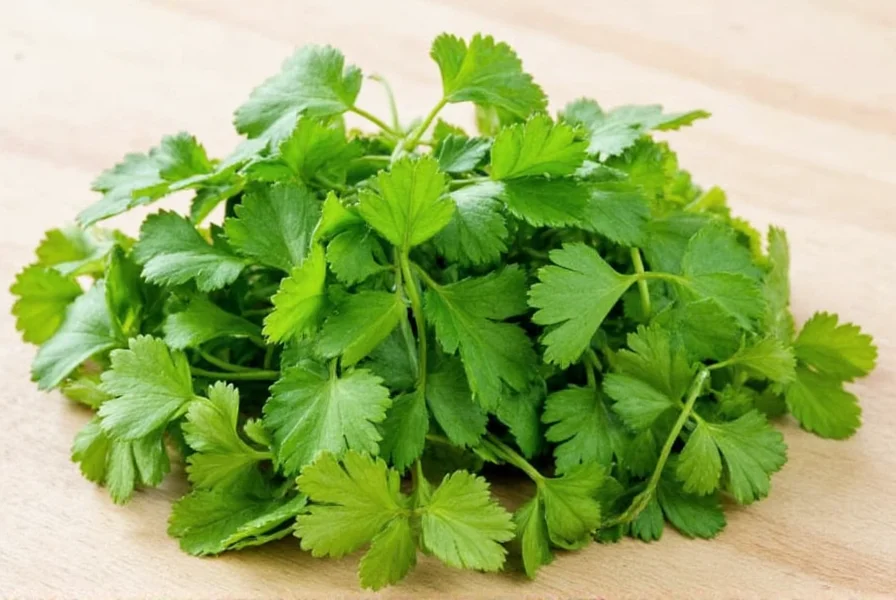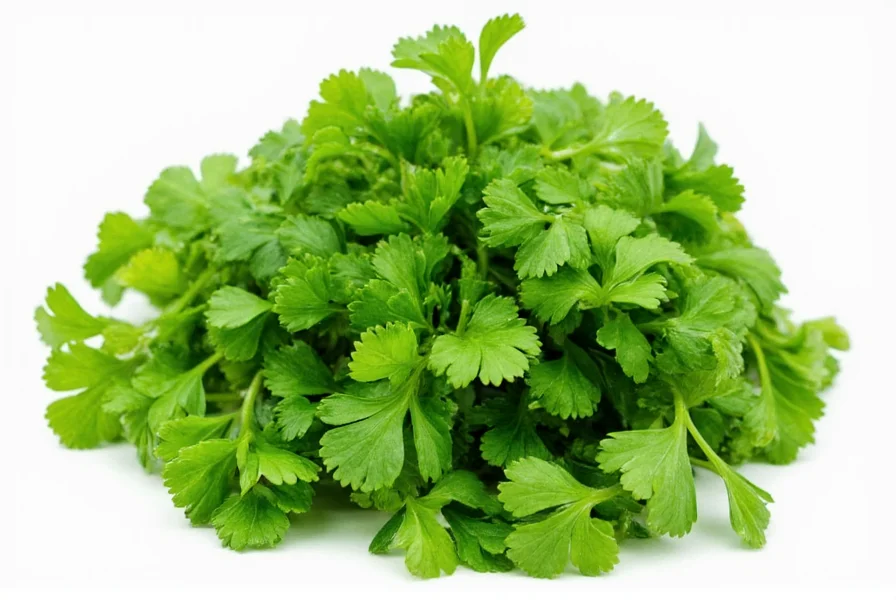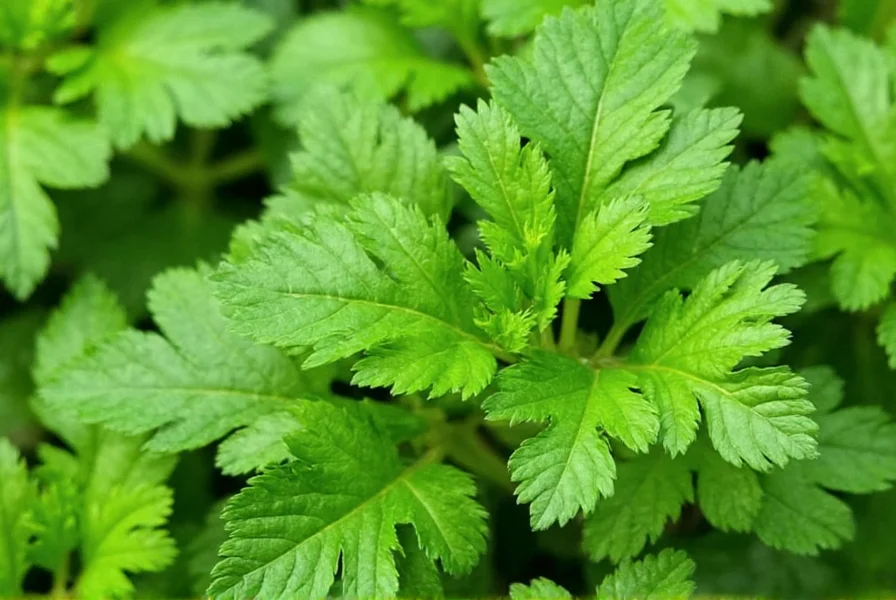Understanding what coriander leaves are and how to use them properly can transform your cooking. These delicate leaves come from the same plant that produces coriander seeds, but they offer a completely different flavor profile and culinary application. In North America, they're commonly called cilantro, while in the UK, India, and many other countries, they're referred to as coriander leaves to distinguish them from the seeds.
What Exactly Are Coriander Leaves?
Coriander leaves (Coriandrum sativum) belong to the Apiaceae family, which includes parsley, carrots, and celery. The entire plant is edible, but the fresh leaves and dried seeds serve different culinary purposes. The confusion in naming stems from regional terminology differences:
| Region | Term for Fresh Leaves | Term for Dried Seeds |
|---|---|---|
| United States & Canada | Cilantro | Coriander |
| United Kingdom & Europe | Coriander leaves | Coriander seeds |
| India & Southeast Asia | Dhaniya (leaves) | Dhaniya (seeds) |
This terminology distinction is crucial when following international recipes. When a recipe calls for "coriander" in the US, it typically means the seeds, while in the UK it could refer to either the leaves or seeds depending on context.
Nutritional Value and Health Benefits of Coriander Leaves
Coriander leaves aren't just flavorful—they pack impressive nutritional benefits. A quarter-cup (10g) serving provides significant amounts of:
- Vitamin K (28% of daily value) - essential for blood clotting and bone health
- Vitamin A (14% of daily value) - important for vision and immune function
- Vitamin C (6% of daily value) - a powerful antioxidant
- Small amounts of potassium, manganese, and dietary fiber
Research suggests several potential health benefits of regularly consuming fresh coriander leaves:
Studies published in the Journal of Environmental Science and Health indicate coriander leaves contain natural compounds that may help lower blood sugar levels, making them potentially beneficial for people managing diabetes. The leaves also contain antioxidants like quercetin and tocopherols that combat oxidative stress in the body.
Traditional medicine systems have long used coriander leaves for digestive support. Modern research supports this use, showing that compounds in fresh coriander may help relax digestive muscles and reduce bloating. When exploring health benefits of coriander leaves, it's important to note that fresh consumption provides different benefits than the seeds.

Culinary Applications Around the World
The distinctive flavor of coriander leaves makes them indispensable in many global cuisines. Understanding how to use coriander leaves in cooking properly ensures you maximize their flavor potential.
In Mexican cuisine, fresh cilantro is essential for salsas, guacamole, and as a garnish for tacos and soups. The leaves' bright flavor cuts through rich dishes and complements lime and chili peppers perfectly. For authentic coriander leaves in Mexican recipes, add them at the very end of cooking or as a fresh garnish to preserve their delicate flavor.
Indian cooking relies heavily on fresh coriander leaves (dhaniya) in chutneys, raitas, and as a finishing touch for curries. The classic combination of fresh coriander and mint creates the base for many Indian condiments. When exploring coriander leaves in Indian cuisine, note that recipes often call for both the leaves and roots, which have an even more intense flavor.
Thai and Vietnamese dishes use coriander leaves both as a garnish and integral ingredient. In Thai cuisine, the leaves add freshness to soups like tom yum and balance spicy flavors in curry pastes. For those interested in using coriander leaves in Asian cooking, try adding them to noodle dishes, spring rolls, and dipping sauces.
Proper Selection, Storage, and Preservation
Knowing how to store fresh coriander leaves properly extends their shelf life and maintains flavor. When selecting coriander leaves at the market:
- Look for vibrant green leaves without yellowing or wilting
- Stems should be crisp, not slimy
- Avoid bunches with flowering tops, which indicates maturity and stronger flavor
For optimal storage, treat coriander leaves like cut flowers:
- Trim the bottom of the stems
- Place in a glass with an inch of water
- Cover loosely with a plastic bag
- Store in the refrigerator for up to 10 days
- Change the water every 2-3 days
If you need longer preservation, freezing works better than drying for coriander leaves. Chop the leaves and freeze them in ice cube trays with a small amount of water or oil. This method preserves more flavor than drying, which significantly changes the herb's character. Understanding proper preservation of coriander leaves ensures you always have this essential herb available.

Growing Coriander Leaves at Home
One of the easiest herbs to grow, coriander thrives in containers or garden beds. For those interested in growing coriander leaves at home, follow these simple guidelines:
- Plant seeds directly in soil (they don't transplant well)
- Provide partial sun in hot climates, full sun in cooler regions
- Keep soil consistently moist but not waterlogged
- Harvest leaves when plants reach 6-8 inches tall
- Succession plant every 2-3 weeks for continuous harvest
Coriander tends to bolt (go to seed) quickly in warm weather, so in hot climates, plant in partial shade or during cooler seasons. If you're specifically growing for leaves rather than seeds, choose slow-bolting varieties like 'Santo' or 'Calypso'.
Common Substitutions and Flavor Pairings
When you don't have fresh coriander leaves available, understanding substitute for fresh coriander leaves can save your recipe. The best alternatives include:
- Parsley (Italian flat-leaf) - similar texture but milder flavor
- Basils (especially lemon basil) - provides citrus notes
- Combination of mint and parsley - approximates the flavor profile
- For cooked dishes only: coriander powder (use sparingly, 1/4 tsp powder ≈ 2 tbsp fresh)
Coriander leaves pair exceptionally well with:
- Lime and lemon
- Chili peppers
- Ginger and garlic
- Cumin and other warm spices
- Cucumber and tomato
Frequently Asked Questions
What's the difference between coriander leaves and cilantro?
Coriander leaves and cilantro are the same plant (Coriandrum sativum). The difference is purely regional terminology. In the United States and Canada, the fresh leaves are called cilantro, while in the UK, Europe, India, and many other countries, they're referred to as coriander leaves. The dried seeds are called coriander in both regions, which creates some confusion.
Can you eat coriander leaves stems?
Yes, coriander leaves stems are completely edible and actually contain more intense flavor than the leaves. The thinner stems can be used along with the leaves in most recipes. For tougher lower stems, chop them finely and add them earlier in the cooking process to allow their flavor to infuse the dish. Many professional chefs use the entire plant to minimize waste and maximize flavor.
Why do some people think coriander leaves taste like soap?
Approximately 21% of the population has a genetic variation that makes coriander leaves taste soapy. This is due to certain olfactory-receptor genes that perceive the aldehydes in coriander leaves similarly to how they detect the fatty acids in soap. This genetic predisposition is more common in people of European ancestry. If you're among those who perceive this soapy taste, try using the leaves in cooked applications or in combination with acids like lime juice, which can help mitigate the effect.
How do you prevent coriander leaves from turning black when cut?
Coriander leaves can oxidize and turn black when cut due to enzymatic browning. To prevent this, add them to dishes at the very end of cooking, chop them with a ceramic or plastic knife (metal can accelerate oxidation), and avoid prolonged exposure to air. When making chutneys or sauces, adding a small amount of acid like lemon juice can help maintain their vibrant green color. For storage, treat them like cut flowers in water rather than wrapping them in paper towels.
Are coriander leaves safe for daily consumption?
Yes, coriander leaves are generally safe for daily consumption in culinary amounts. They're packed with nutrients and antioxidants. However, people on blood-thinning medications should be mindful of their intake due to the high vitamin K content. Those with known allergies to plants in the Apiaceae family (like parsley or celery) should exercise caution. As with any food, moderation is key, but regular use of coriander leaves in cooking provides health benefits without significant risks for most people.











 浙公网安备
33010002000092号
浙公网安备
33010002000092号 浙B2-20120091-4
浙B2-20120091-4